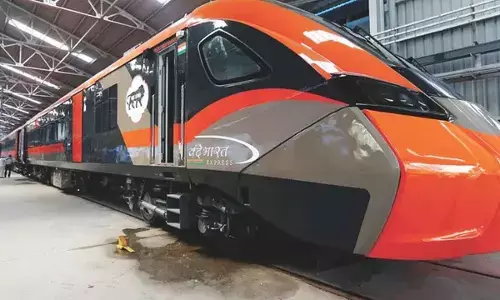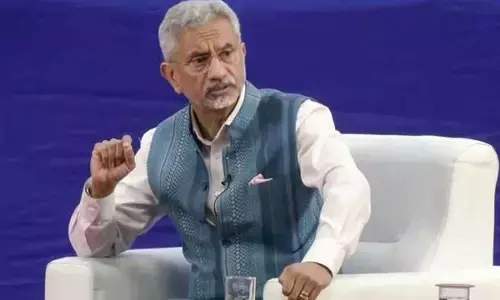Facilities for the elderly and the disabled by the Indian Railways

The Indian Railways has provided the public with transportation for 177 illustrious years, from steam trains to ultra-rapid express
New Delhi: The Indian Railways has provided the public with transportation for 177 illustrious years, from steam trains to ultra-rapid express. With 7,325 stations spread out across the four corners of the nation and 99,235 kilometre of track, the network is currently the fourth-largest railway system in the entire globe.
More than 350 million of the 3.54 billion passengers who rode local, postal and express trains in FY22 were senior citizens and people with disabilities. In order to give the "Divyangjans" convenient and barrier-free transportation across the railway network, the Ministry of Railways started the "Sugamya Bharat Abhiyan" (Accessible India Campaign) in 2015.
Elderly passengers and others with disabilities often have trouble getting on and off trains, especially when they are travelling long distances. Help is required to cross footbridges in stations with several platforms, and boarding trains while clutching the side bars is difficult. It is frequently necessary to step up the footboards of similar sizes because platforms are often at lower levels. Elderly travellers must be careful to keep their balance and frequently struggle to exit the trains with their belongings. Additionally, long-distance travellers with disabilities require specific restroom facilities and large displays for passenger aid information at upscale stations. These passenger demands have prompted the railway authority to provide the following amenities to ensure that the elderly can travel without inconvenience.
* Wheelchairs and battery operated vehicles
Senior persons and Divyangjans are entitled to complimentary wheelchair services to accompany them to and from the trains. More than 5400 railway stations have over 7000 wheelchairs available to help the disabled commute. The community might avoid the inconvenience of having to walk great distances if there was one wheelchair available on each platform in all major stations. For a little fee, special porters and attendants can be pre-arranged or hired to assist the disabled while commuting. Under the "Yatri Mitra Sewa" programme, passengers can also reserve wheelchair porter services at no cost through NGOs, charitable trusts and PSUs.
There are wheelchair-accessible ramps at around 2586 stations to facilitate simple movements. Under the Railways' Corporate Social Responsibility, Divyangjans and senior persons can use Battery Operated Vehicles (BOVs) at important stations for free or for a fee (CSR). Exclusively for those with disabilities, specially constructed buses, commonly referred to as SLRD buses, with wheelchair-friendly bigger entrance doors and wider aisles are available.
* Platform and in-train facilities
Nearly all Mail and Express trains include SLRD coaches, which have four berths, modified bathrooms, and two lower berths for passengers with special needs and two higher sleepers for attendants. Senior citizens and travellers with disabilities who have acceptable identification proving their age and possessing the required certifications may be given any available lower berths by train ticket examiners (TTEs). Lower berths are automatically assigned to senior citizens and PwD when purchasing tickets using the computerised Passenger Reservation System (PRS), subject to availability, even if no preference is expressed.
Depending on the number of coaches in the train, the community has four to five lower berths per coach in 3AC classes and three to four lower berths per coach in 2AC classes. Furthermore, in the first and last second class compartments of local trains, all zonal railways have set aside a minimum of seven seats for older persons. As of August 2022, 981 lifts are operational throughout 400 stations and more than 1090 escalators are operational at 339 stations with 25,000 people using them each day. In addition, 3897 stations include drinking water or restrooms for passengers with special needs, and more than 1465 stations have non-slip paths connecting parking lots to station buildings.
* Reservation and navigation
Around 50-75 per cent of ticket prices are discounted for people with physical disability, mental incoherence, and vision, hearing, or communication impairments. Prior to the pandemic, all tickets for ladies aged 58 and older were discounted by 50 per cent, while all tickets for men aged 60 and older were discounted by 40 per cent. After the epidemic, certain powers have been withdrawn and are waiting to be restored. Several PRS centres offer specialised counters to handle reservations made by elderly and disabled people. Additionally, 1474 stations feature large signs with Braille Navigation Maps to aid commuters who are blind or visually impaired and inform them of the various services offered.











